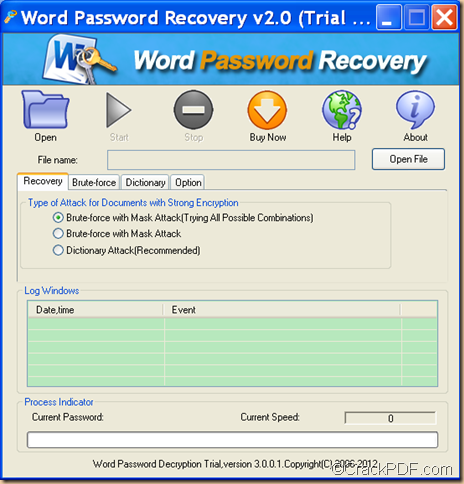- How To Decrypt Htpasswd Password Online
- Decrypt Password Online
- Type Password To Decrypt Storage
- How To View Encrypted Password
- Sql Server Decrypt Password
- How To Decrypt Htpasswd Password Reset
Note
Htpasswd decrypt. Hi all, For a hack lab in that I'm doing I reach a point where I get a htpasswd file in clear in an Apache server. Is there any tool that given the crypted password I. Simply enter the url /members/.htpasswd, and you should receive a full userlist as well as all the encrypted passwords. Very silly indeed. If the file doesn't exist, on a poorly configured server one merely has to read the.htaccess file to obtain the location. If it is below the 'web-root', then it would require a cgi-exploit of some.
This plugin is part of the community.general collection (version 1.3.0).
How To Decrypt Htpasswd Password Online
- (Note: if the.htpasswd file doesn't already exist, either create it first, or add the -c parameter to htpasswd to automatically create it. If the file exists, and you use -c, it will overwrite the file instead of appending to it.) Using crypt encryption: htpasswd -bd.htpasswd testuser Pass123. Using MD5 encryption.
- Re: decrypt password in the /etc/password file The passwords in /etc/passwd cannot be decrypted. They are 'HASHED' passwords. You can download crack from the internet.
Honey singh high heels mp3 song 320kbps. To install it use: ansible-galaxycollectioninstallcommunity.general.
To use it in a playbook, specify: community.general.htpasswd.
Add and remove username/password entries in a password file using htpasswd.
This is used by web servers such as Apache and Nginx for basic authentication.
The below requirements are needed on the host that executes this module.
Decrypt Password Online
passlib>=1.6
| Parameter | Choices/Defaults | Comments |
|---|---|---|
| attributes string | The attributes the resulting file or directory should have. To get supported flags look at the man page for chattr on the target system. This string should contain the attributes in the same order as the one displayed by lsattr. The = operator is assumed as default, otherwise + or - operators need to be included in the string. | |
| create |
| Used with state=present. If specified, the file will be created if it does not already exist. If set to 'no', will fail if the file does not exist |
| crypt_scheme string | Default: | Encryption scheme to be used. As well as the four choices listed here, you can also use any other hash supported by passlib, such as md5_crypt and sha256_crypt, which are linux passwd hashes. If you do so the password file will not be compatible with Apache or Nginx Some of the available choices might be: apr_md5_crypt, des_crypt, ldap_sha1, plaintext |
| group string | Name of the group that should own the file/directory, as would be fed to chown. | |
| mode raw | The permissions the resulting file or directory should have. For those used to /usr/bin/chmod remember that modes are actually octal numbers. You must either add a leading zero so that Ansible's YAML parser knows it is an octal number (like 0644 or 01777) or quote it (like '644' or '1777') so Ansible receives a string and can do its own conversion from string into number.Giving Ansible a number without following one of these rules will end up with a decimal number which will have unexpected results. As of Ansible 1.8, the mode may be specified as a symbolic mode (for example, u+rwx or u=rw,g=r,o=r). | |
| name string / required | aliases: username | |
| owner string | Name of the user that should own the file/directory, as would be fed to chown. | |
| password string | Must be specified if user does not exist yet. | |
| path path / required | Path to the file that contains the usernames and passwords | |
| selevel | The level part of the SELinux file context. This is the MLS/MCS attribute, sometimes known as the range.When set to _default, it will use the level portion of the policy if available. | |
| serole string | When set to _default, it will use the role portion of the policy if available. | |
| setype string | When set to _default, it will use the type portion of the policy if available. | |
| seuser string | By default it uses the system policy, where applicable.When set to _default, it will use the user portion of the policy if available. | |
| state string |
| Whether the user entry should be present or not |
| unsafe_writes boolean |
| Influence when to use atomic operation to prevent data corruption or inconsistent reads from the target file. By default this module uses atomic operations to prevent data corruption or inconsistent reads from the target files, but sometimes systems are configured or just broken in ways that prevent this. One example is docker mounted files, which cannot be updated atomically from inside the container and can only be written in an unsafe manner. This option allows Ansible to fall back to unsafe methods of updating files when atomic operations fail (however, it doesn't force Ansible to perform unsafe writes). IMPORTANT! Unsafe writes are subject to race conditions and can lead to data corruption. |
Type Password To Decrypt Storage
Note
How To View Encrypted Password
This module depends on the passlib Python library, which needs to be installed on all target systems.
On Debian, Ubuntu, or Fedora: install python-passlib.
On RHEL or CentOS: Enable EPEL, then install python-passlib.
Authors¶
Sql Server Decrypt Password

How To Decrypt Htpasswd Password Reset
Ansible Core Team
